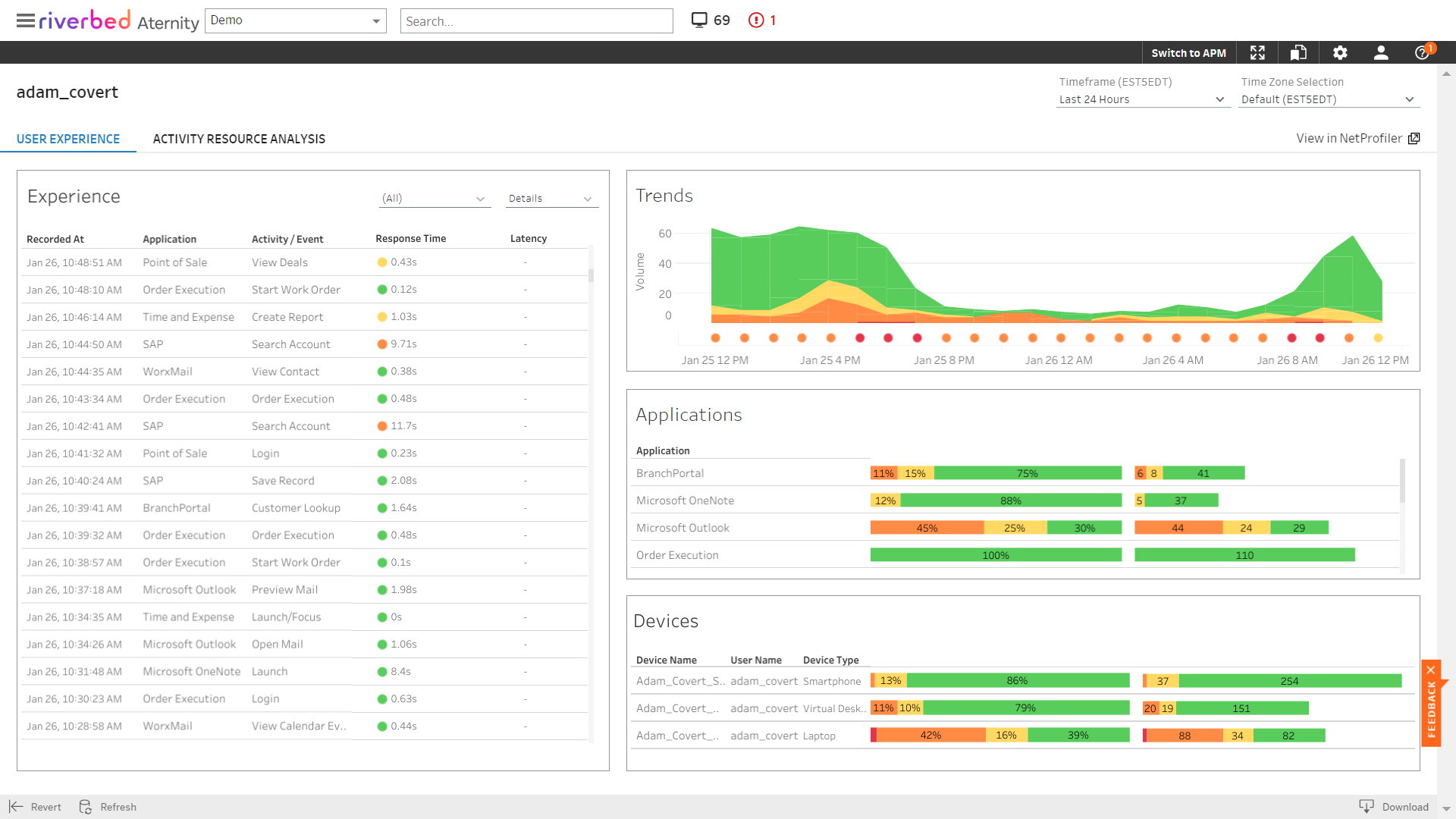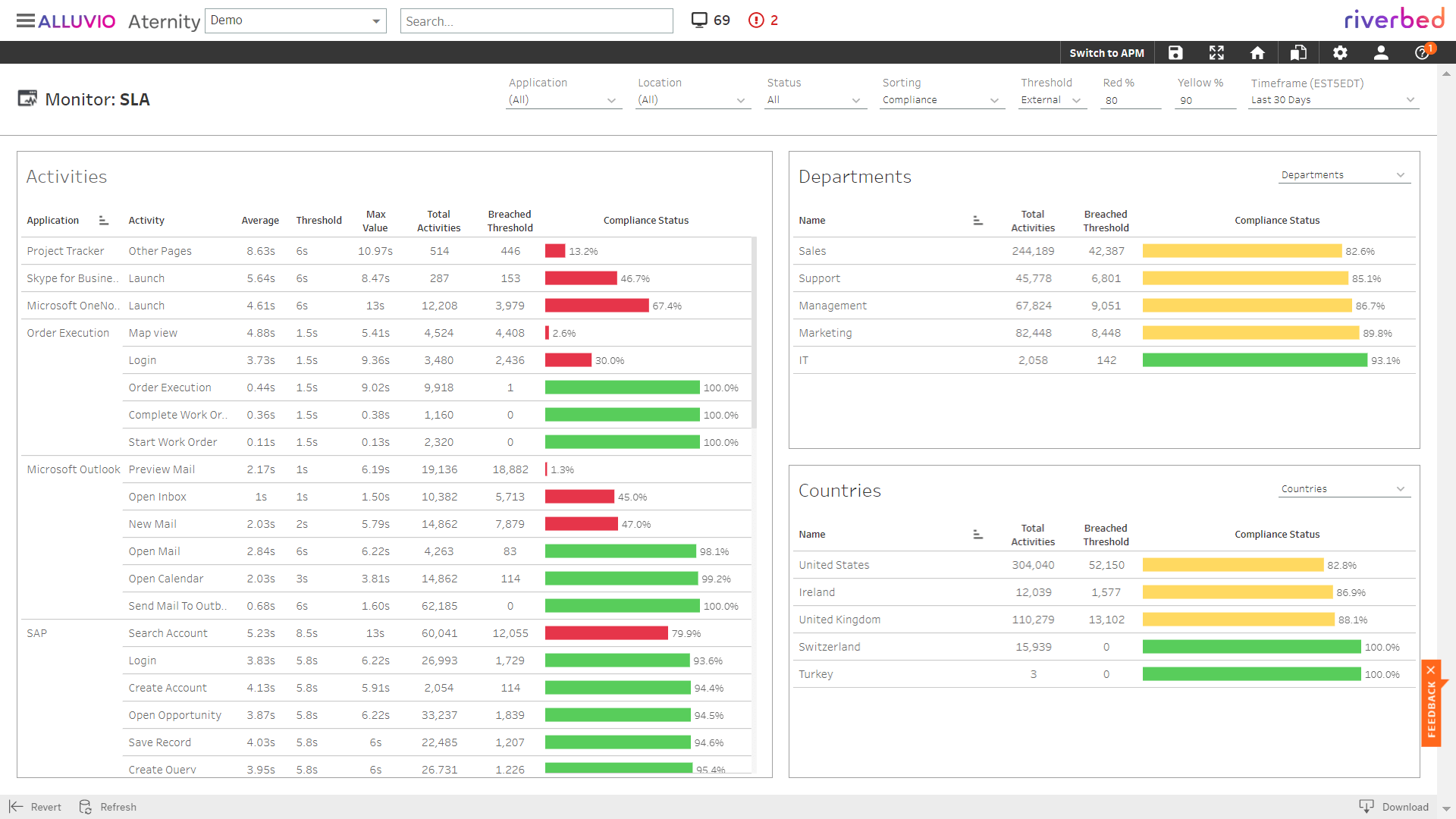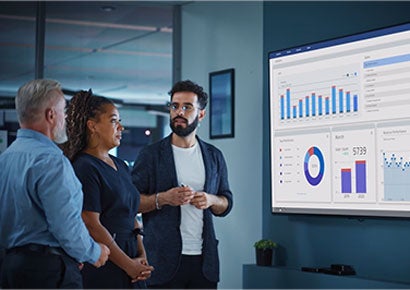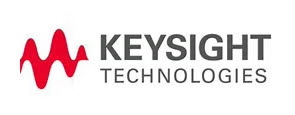CHALLENGES
Every click matters. Optimizing the performance of your business-critical applications helps you keep pace with ever-increasing competition and customer demand.
SOLUTIONS
How Riverbed Solves These Challenges
Baseline "Click to Render" Time
Monitor users’ interactions with applications in the context of a business workflow, to set thresholds for the time required to look up a patient record, execute a trade, etc

Deliver Better Service Through XLAs
Use Experience Level Agreements to track compliance of business critical apps to performance thresholds based on business processes

Resolve Application Issues
Isolate and resolve issues in your cloud-native environment with Real User Monitoring and OpenTelemetry support

Application Performance Management
Simplified high-definition APM visibility leveraging Real User Monitoring, Synthetic Monitoring, and OpenTelemetry, that is scalable, easy to use and deploy, and unifies insights across end users, applications, networks, and the cloud-native ecosystem.
Accelerate Apps Across the Distributed Enterprise
Overcome network performance inhibitors such as latency, congestion, and suboptimal last-mile conditions to speed up app performance
FEATURED RESOURCES
CUSTOMER STORIES
Empowering the Digital Experience of Thousands of Organizations Worldwide













